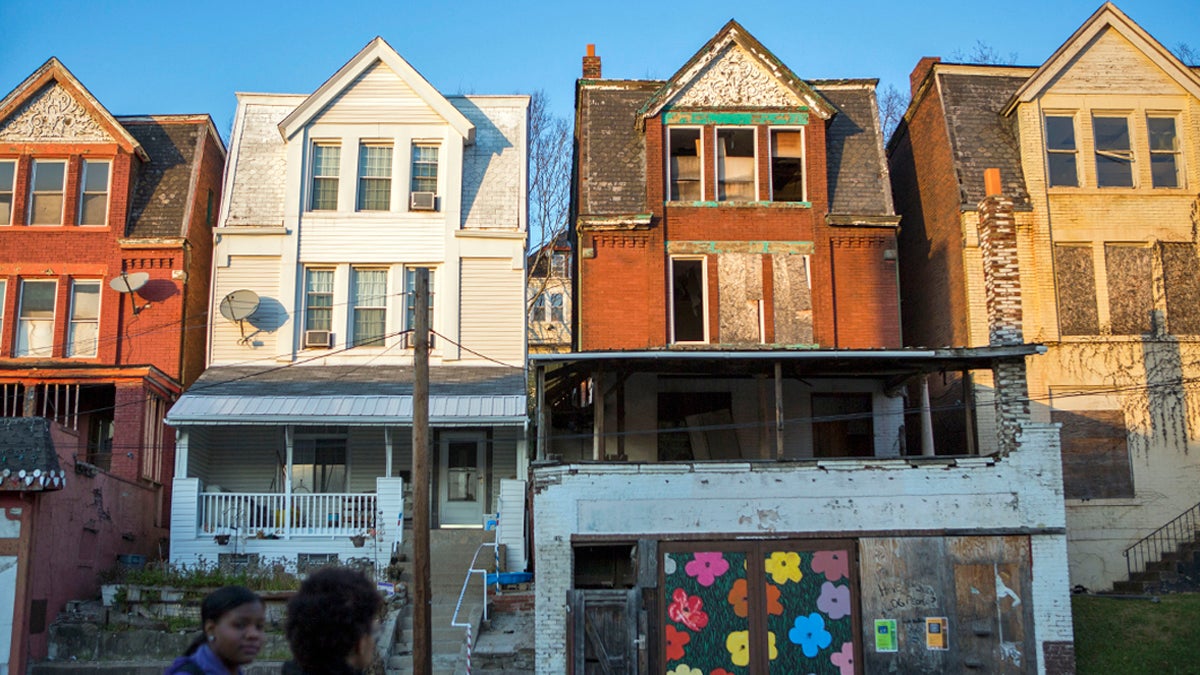Ideas Worth Stealing: Section 8 voucher money to assist with homeownership

Instead of subsidizing rent, could vouchers help people with low incomes become homeowners? (Photo Jessica Kourkounis)
Instead of subsidizing rent, could vouchers help people with low incomes become homeowners?
Ideas Worth Stealing: Every week, Keystone Crossroads will look to cities across the world for lessons in urbanism and municipal governance that could benefit Pennsylvania. No city does it all right, and we hope these examples from metropolises near and far inspire and encourage cities here to think outside the box.
In Pittsburgh, housing is a matter of paradoxes: affordable housing advocates point to a shortage of units accessible to low-income renters while all around the city houses worth very little stand vacant. Mayor Bill Peduto wants to address both the dilapidated structures and the dearth of affordable housing in one initiative, using federal Section 8 funds to fix up vacant homes and provide mortgages to families that would otherwise be renting in a rising market.
Section 8 vouchers — also know as housing choice vouchers — subsidize low-income renters’ monthly payments in the private market. The family or individual pays 30 percent of income and the voucher covers the rest (up to a limit).
Renters are often faced with instability and uncertainty. For example, in some neighborhoods it’s becoming more difficult to find affordable rentals, even for longtime area residents, or landlords choose not to work with Section 8 tenants. In Pittsburgh, just 25 percent of Section 8 participants successfully find housing where they can use their vouchers.
Peduto’s idea is to take 30 years’ worth of one voucher’s value and put that money into renovating a blighted home and then providing a mortgage. The new homeowner’s mortgage payments would still be 30 percent of income, just like with a traditional Section 8 rental. But instead of dumping money towards rent, the low-income individual would be building equity.
If the city can scale such an idea, it could grow the number of homeowners, stabilize neighborhoods, and decrease blight.
The Housing Authority of the City of Pittsburgh (HACP) already operates a version of this. HACP is part of a federal pilot program that gives them more autonomy in how they use federal funds, and one of the things they’ve done with that flexibility is grow a homeownership program. In addition to offering classes and closing cost assistance, they offer a forgivable soft second mortgage to families. To calculate the mortgage, HACP looks at what a person’s voucher assistance would be over a ten-year period (currently it’s maxed at $32,000).
David Weber, COO of HACP, said the extra money allows families to purchase a higher quality house. “As long as they stay in that house we forgive 10 percent of that loan per year for 10 years. So for the same amount of money as we would pay on a monthly payment they get that upfront, they can secure the house that will be their long term home,” Weber said. They’ve been doing this with about ten families per year for the past decade. “It’s really been quite successful,” he said.
Peduto’s idea would throw the renovation of blighted properties into the mix.
The Non-Profit Quarterly points out in an article that Peduto’s idea is just that — an idea — for now. And, NPQ writes, “a policy of pushing housing choice voucher holders into blighted homes in low-income neighborhoods is exactly opposite from what’s being promoted by the Obama administration.” For example, one federal initiative pushes voucher holders to move to wealthier neighborhoods by increasing how much a voucher is worth there, while decreasing a voucher’s value in poorer sections of a city.
Still, as neighborhoods in Pittsburgh and beyond inevitably gentrify, some iteration of this plan could help low-income homeowners get in on the area’s growth.
WHYY is your source for fact-based, in-depth journalism and information. As a nonprofit organization, we rely on financial support from readers like you. Please give today.


